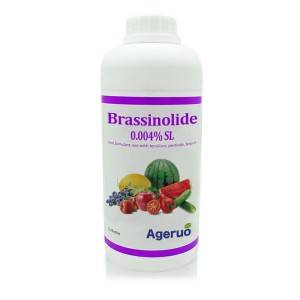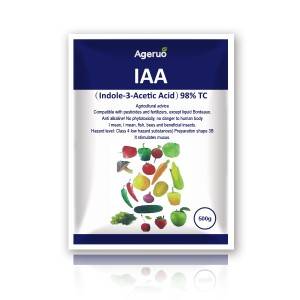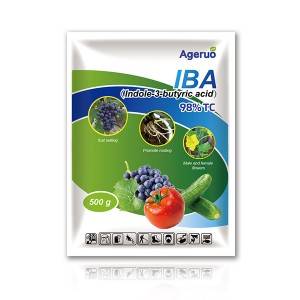Plant Growth Regulators: What are Plant Growth Regulators?
Plant growth regulators (PGRs), also known as plant hormones, are chemical substances that significantly impact the growth and development of plants. These compounds can be naturally occurring or synthetically produced to mimic or influence natural plant hormones.
Functions and Importance of Plant Growth Regulators
PGR regulate a broad spectrum of physiological processes in plants, including:
Cell Division and Elongation: They control the rate of cell division and elongation, directly influencing overall plant growth.
Differentiation: PGR assist in the development of cells into various tissues and organs.
Dormancy and Germination: They play critical roles in seed dormancy and germination processes.
Flowering and Fruiting: PGR regulate the timing and formation of flowers and fruits.
Response to Environmental Stimuli: They enable plants to respond to environmental changes such as light, gravity, and water availability.
Stress Responses: PGR help plants cope with stress conditions like drought, salinity, and pathogen attacks.

Uses of Plant Growth Regulators:
Plant growth regulators are widely used in agriculture and horticulture. They enhance or modify plant growth and development to improve crop yield, quality, and stress resistance. Practical applications include:
Promoting Root Growth: Auxins are used to stimulate root growth in cuttings.
Regulating Fruit Ripening: Ethylene is used to synchronize fruit ripening.
Increasing Crop Yield: Gibberellins can be applied to increase the size of fruits and vegetables.
Controlling Plant Size: Certain PGRs are used to control the size of ornamental plants and crops, making them more manageable.

Types of Plant Growth Regulators:
There are five main categories of plant growth regulators:
Auxins: Promote stem elongation, root growth, and differentiation. They are involved in responses to light and gravity.
Gibberellins (GA): Stimulate stem elongation, seed germination, and flowering.
Cytokinins: Promote cell division and shoot formation, and delay leaf senescence.
Ethylene: Influences fruit ripening, flower wilting, and leaf fall; also responds to stress conditions.
Abscisic Acid (ABA): Inhibits growth and promotes seed dormancy; helps plants respond to stress conditions like drought.

Commonly Used Plant Growth Regulators:
Brassinolide
Function: Brassinolide is a type of brassinosteroid, a class of plant hormones that promote cell expansion and elongation, enhance resistance to environmental stress, and improve overall plant growth and development.
Applications: Used to enhance crop yield and quality, increase resistance to pathogens, and improve plant growth under stress conditions.
Cloruro de Mepiquat (Mepiquat Chloride)
Function: Mepiquat chloride is a plant growth regulator that inhibits gibberellin biosynthesis, leading to reduced stem elongation and more compact plant growth.
Applications: Commonly used in cotton production to control plant height, reduce lodging (falling over), and enhance boll development. It helps in improving harvest efficiency and yield.
Gibberellic Acid (GA3)
Function: Gibberellic acid is a plant hormone that promotes stem elongation, seed germination, flowering, and fruit development.
Applications: Used to break seed dormancy, stimulate growth in dwarf plants, increase fruit size in grapes and citrus, and improve malting quality in barley.
Indole-3-Acetic Acid (IAA)
Function: Indole-3-acetic acid is a naturally occurring auxin that regulates various aspects of plant growth, including cell division, elongation, and differentiation.
Applications: Used to promote root formation in cuttings, enhance fruit setting, and regulate growth patterns in plants. It is also used in tissue culture to stimulate cell division and growth.
Indole-3-Butyric Acid (IBA)
Function: Indole-3-butyric acid is another type of auxin that is particularly effective in stimulating root initiation and development.
Applications: Commonly used as a rooting hormone in horticulture to encourage root formation in plant cuttings. It is also applied to improve the establishment of transplanted plants and to enhance root growth in hydroponic systems.
Safety of Plant Growth Regulators:
The safety of plant growth regulators depends on their type, concentration, and application method. Generally, when used according to guidelines and recommendations, PGRs are safe for plants and humans. However, improper use or overuse can lead to negative effects:
Phytotoxicity: Using excessive doses can harm plants, causing abnormal growth or even death.
Environmental Impact: Runoff containing PGRs can affect non-target plants and microorganisms.
Human Health: Proper handling and protective measures are essential to avoid potential risks to human health.
Regulatory bodies like the Environmental Protection Agency (EPA) in the United States and similar organizations worldwide oversee the safe use of PGRs to ensure they do not pose significant risks when used appropriately.

Conclusion:
Plant growth regulators are essential tools in modern agriculture and horticulture, aiding in the control and enhancement of plant growth and development. When used correctly, they offer numerous benefits such as increased yield, improved quality, and better stress resistance. However, careful management is crucial to avoid potential negative effects on plants, the environment, and human health.





